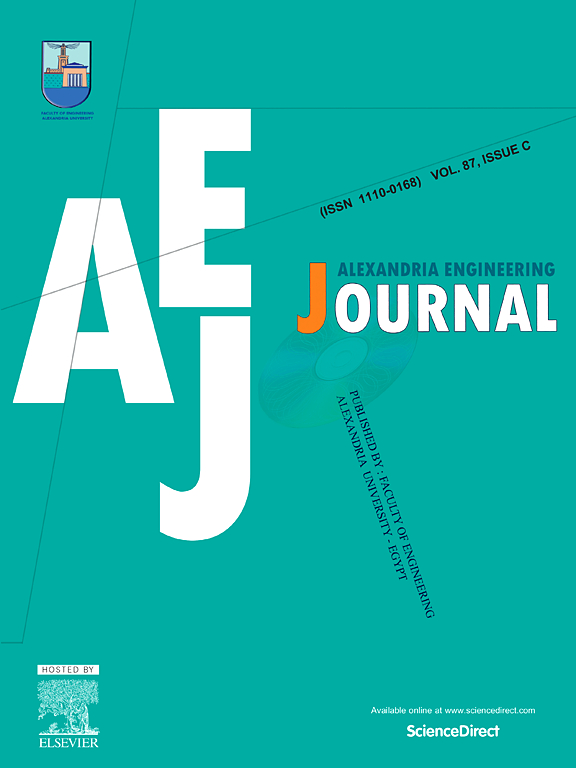C-BERT:基于融合词义聚类和 BERT 的蒙古语反向词典
IF 6.2
2区 工程技术
Q1 ENGINEERING, MULTIDISCIPLINARY
引用次数: 0
摘要
反向词典是一种接受用户提供的自然语言描述并返回语义匹配词典的电子词典。尽管蒙古语词典学研究取得了丰硕成果,但有关蒙古语反向词典的讨论尚未出现。为解决这一问题,我们提出了一种创新模型--C-BERT,该模型结合了先进的词义聚类和 BERT 分类技术。首先,我们使用 K-means 算法将知名蒙古语词典中的预处理词条聚类为 5000 个聚类,形成一个综合训练集。然后,我们通过随机负抽样优化了训练集的数据分布,并对 CINO-large 模型进行了微调,最终创建了 C-BERT 模型。当用户提交描述时,C-BERT 会将其与 5000 个聚类的中心词进行匹配,并选出前 125 个聚类。然后,它在这些聚类中匹配目标词,推荐语义相关性最高的 100 个候选词。与七个基线模型相比,C-BERT 表现出了卓越的性能,尤其是在人工生成描述的数据集上进行评估时,其同义词准确率@10/100 分别达到了 16.5% 和 71%。得益于聚类,C-BERT 的推理速度提高了十倍以上,大大增强了其实用性。因此,我们开发了一个基于 C-BERT 的用户友好型在线应用平台,供广大用户使用,网址为 http://mrdp.net/。本文章由计算机程序翻译,如有差异,请以英文原文为准。
C-BERT: A Mongolian reverse dictionary based on fused lexical semantic clustering and BERT
A reverse dictionary is an electronic dictionary that accepts user-provided natural language descriptions and returns semantically matching lexicons. Despite substantial research achievements in Mongolian lexicography, discussions on Mongolian reverse dictionaries have not yet emerged. To address this, we propose an innovative model, C-BERT, combining advanced lexical semantic clustering and BERT classification technology. Initially, the -means algorithm was used to cluster preprocessed entries from well-known Mongolian dictionaries into 5000 clusters, forming a comprehensive training set. We then optimized this training set’s data distribution through random negative sampling and fine-tuned the CINO-large model, leading to the creation of the C-BERT model. When users submit descriptions, C-BERT matches them with the central words of 5000 clusters, selecting the top 125 clusters. It then matches target words within these clusters to recommend the top 100 semantically relevant candidates. Compared to the seven baseline models, C-BERT demonstrates superior performance, particularly when evaluated on datasets with human-generated descriptions, where its synonym accuracy@10/100 reaches 16.5% and 71%, respectively. Benefiting from clustering, C-BERT improves inference speed more than tenfold, significantly enhancing its practical utility. Accordingly, we have developed a user-friendly online application platform based on C-BERT for a broad range of users, available at http://mrdp.net/.
求助全文
通过发布文献求助,成功后即可免费获取论文全文。
去求助
来源期刊

alexandria engineering journal
Engineering-General Engineering
CiteScore
11.20
自引率
4.40%
发文量
1015
审稿时长
43 days
期刊介绍:
Alexandria Engineering Journal is an international journal devoted to publishing high quality papers in the field of engineering and applied science. Alexandria Engineering Journal is cited in the Engineering Information Services (EIS) and the Chemical Abstracts (CA). The papers published in Alexandria Engineering Journal are grouped into five sections, according to the following classification:
• Mechanical, Production, Marine and Textile Engineering
• Electrical Engineering, Computer Science and Nuclear Engineering
• Civil and Architecture Engineering
• Chemical Engineering and Applied Sciences
• Environmental Engineering
 求助内容:
求助内容: 应助结果提醒方式:
应助结果提醒方式:


